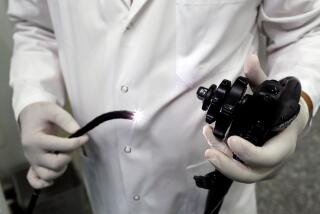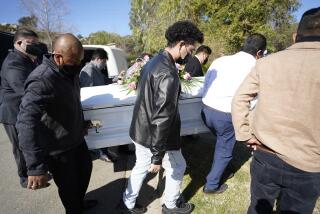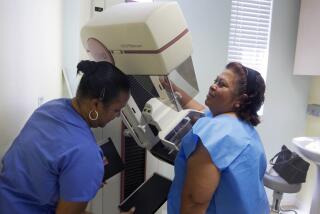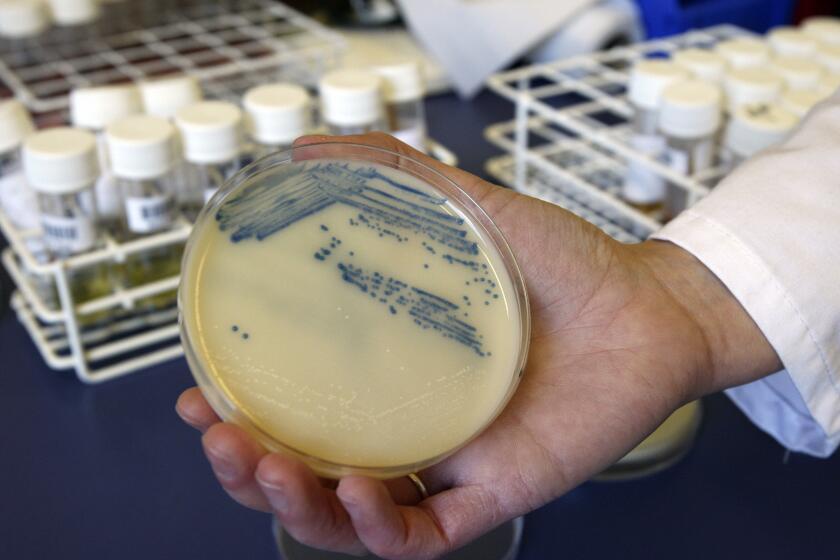Breast cancer cases in U.S. projected to rise as much as 50% by 2030

National Cancer Institute researchers have forecast an increase of up to 50% in U.S.
New breast cancer cases in the U.S. are forecast to rise by as much as 50% by 2030, government researchers reported Monday.
But while the surge in cases will pose “a huge challenge” to medical providers over the coming decades, coauthor Philip S. Rosenberg, of the National Cancer Institute said, the data also revealed “one silver lining”: lower incidence of the subtype known as estrogen-receptor-negative breast cancers, including difficult-to-treat HER2-positive and triple-negative types.
------------
FOR THE RECORD
Breast cancer: An article in the April 26 Section A about a projected increase in breast cancer cases by 2030 suggested that invasive breast cancers are ones that have spread to other parts of the body. Invasive breast cancers remain in the breast but have spread beyond their tissue of origin. In addition, an earlier version of the article said that the age distribution of women with new breast cancers would change by 2010. The age distribution will change by 2030.
------------
“Although breast cancer overall is going to increase, different subtypes of breast cancer are moving in different directions and on different trajectories,” Rosenberg said in a statement.
He and colleagues at the National Cancer Institute shared the new projections, which were assembled using cancer incidence data, census data and forecasting models, at the annual meeting of the American Assn. for Cancer Research in Philadelphia on Monday.
The group estimated that the total number of new breast cancer cases would increase from 283,000 in 2011 to an estimated 441,000 in 2030. The proportion of invasive estrogen-receptor-positive cancers was expected to hold steady at 63%, while that of estrogen-receptor-positive cancers that had not spread to other parts of the body was expected to increase, from 19% to 29%.
Estrogen-receptor-negative cancers were expected to drop from 17% to 9% of the total cases. Rosenberg said the researchers did not know the reasons behind the projected decline, but pointed to “intriguing clues.” For example, he noted, women who first give birth at a young age and do not breastfeed are at high risk for early onset of this subtype -- but more women today delay childbearing and opt to breastfeed, factors that might help explain the projected drop in cases.
The researchers also predicted that the age distribution of women with new breast cancers would change by 2030, with the percentage of new cases occurring in women ages 70-84 expected to increase from 24% to 35% and that in women ages 50-69 was expected to fall from 55% to 44%.
The team said it embarked on its study to help oncologists define a “proactive road map” for prevention and treatment in the future.
For more on science and health, follow me on Twitter: @LATerynbrown







